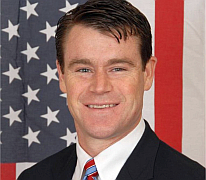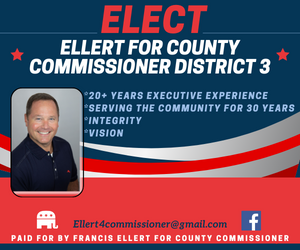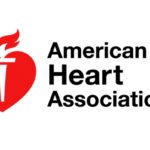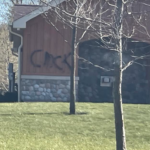 U.S. Senator Todd Young (R-Ind.), along with Senators Chuck Grassley (R-Iowa), Debbie Stabenow (D-Mich), and Michael Bennet (D-Colo.), sent a letter to U.S. Department of Health and Human Services (HHS) Secretary Alex Azar asking him to ensure that the implementation of the Family First Prevention Services Act (FFPSA) will help older youth avoid foster care entry or re-entry, and successfully transition out of care.
U.S. Senator Todd Young (R-Ind.), along with Senators Chuck Grassley (R-Iowa), Debbie Stabenow (D-Mich), and Michael Bennet (D-Colo.), sent a letter to U.S. Department of Health and Human Services (HHS) Secretary Alex Azar asking him to ensure that the implementation of the Family First Prevention Services Act (FFPSA) will help older youth avoid foster care entry or re-entry, and successfully transition out of care.
“…approximately 23,000 youth ‘age out’ of foster care each year and continue to face a variety of challenges in their transition into adulthood. By the time former foster youth reach the age of 23, 52 percent are unemployed; 94 percent have not completed post-secondary studies, 81.2 percent of males and 57.2 percent of females have been arrested; 37 percent have experienced homelessness; and 77 percent of females have been pregnant,” the Senators wrote. “To maximize the opportunities and potential for this promising population of young people, we urge HHS to develop broad and inclusive state guidance to ensure that older youth at risk of entering, in, and transitioning out of foster care are able to access the full range of prevention service and program supports that FFPSA authorizes.”
The Family First Prevention Services Act was signed into law on February 9, 2018 as part of the Bipartisan Budget Act. The law reforms the federal child welfare financing streams, Title IV-E and Title IV-B of the Social Security Act, to provide services to families who are at risk of entering the child welfare system.
The Family First Prevention Services Act also aims to prevent children from entering foster care by allowing federal reimbursement for mental health services, substance use treatment and in-home parenting skill training, and seeks to improve the well-being of children already in foster by incentivizing states to reduce placement of children in congregate care.
The full text of the letter can be viewed below.
The Honorable Alex Azar
Secretary, U.S. Department of Health and Human Services
200 Independence Avenue, SW
Washington, D.C. 20201
Dear Secretary Azar,
As supporters of the bipartisan Family First Prevention Services Act (FFPSA), we respectfully request that the Department of Health & Human Services (HHS) continue to work expeditiously to implement the FFPSA’s prevention provisions for older youth. As you know, approximately 23,000 youth “age out” of foster care each year and continue to face a variety of challenges in their transition into adulthood. By the time former foster youth reach the age of 23:
- 52% are unemployed;
- 94% have not completed post-secondary studies;
- 81.2% of males and 57.2% of females have been arrested;
- 37% have experienced homelessness; and
- 77% of females have been pregnant.
These adverse outcomes are not only an unacceptable result for our nation’s young people – particularly among youth who “age out” of foster care without permanency – they are costly to taxpayers. To maximize the opportunities and potential for this promising population of young people, we urge HHS to develop broad and inclusive state guidance to ensure that older youth at risk of entering, in, and transitioning out of foster care are able to access the full range of prevention service and program supports that FFPSA authorizes.
The new law’s two primary goals are to prevent children from unnecessarily entering or re-entering foster care and to reduce inappropriate residential placements of foster children and youth. HHS will play a crucial role in ensuring that all children, including older youth, enjoy FFPSA’s protections and benefits. In particular, we ask that HHS:
- Emphasize that the evidence-based prevention services and programs eligible for federal reimbursement include older youth. FFPSA directs HHS to give states maximum flexibility to define who qualifies for a “candidate for care.” For this reason, we support HHS’ statements that it does not intend to further define the term at the federal level.
Traditionally, federal prevention efforts have not supported older youth. For example, efforts to prevent the removal of a child have often overlooked the risk of older youth re-entering the foster care system. Since Congress passed the Fostering Connections to Success and Increasing Adoptions Act in 2008, which gives states the option to extend foster care coverage to age 21, approximately half of the states have extended foster care beyond the minimum age of 18. We applaud their efforts and hope more states will extend foster care under Fostering Connections for this vulnerable population.
While we support HHS’s decision not to issue a federal definition of a “candidate for care,” we encourage HHS to clarify through its guidance that states should consider older youth in every aspect of FFPSA implementation. Building on Fostering Connections, HHS should inform states that youth ages 18 to 21 are eligible for prevention services and programs if they are at risk of entering or re-entering foster care. HHS should also encourage states to define the term “candidate for care” as broadly as possible to explicitly include older youth. Moreover, HHS should encourage states to include in its definition of a “candidate for care” older youth who exit foster care without permanency, as they are at heightened risk for re-entering foster care.
- Include in HHS’s list of pre-approved services and programs as many as possible eligible prevention services and programs for older youth, and for pregnant and parenting foster youth. FFPSA requires HHS to issue guidance on the practice criteria for “promising,” “supported,” and “well-supported” services and programs no later than October 1, 2018, including a list of pre-approved services and programs that meet the requirements. We request that HHS include as many as possible eligible services and programs on its list that are applicable to older youth, pregnant foster youth, and parenting foster youth. This would further encourage states to support older youth who are at risk of entering or re-entering foster care, or who exit foster care without permanency (as they are at heightened risk for re-entering care), as well as pregnant and parenting foster youth.
In an effort to help build the evidence base in the initial phase of FFPSA implementation, HHS could also create a provisional category of services and programs that have not yet met the “promising” standard, but that are making progress toward achieving it in the near future. For example, HHS’s list of pre-approved services and programs could provisionally include services and programs from Fiscal Years 2019 to 2021 that are trauma-informed; can demonstrate positive outcomes for children, youth and/or families; and that can provide documentation of a current, ongoing evaluation that is expected to be completed by Fiscal Year 2021.
- Define in HHS guidance, or encourage states to define, the term “pregnant and parenting foster youth” as broadly as possible to include all youth in need of prevention and re-entry prevention services. The Midwest Evaluation of the Adult Functioning of Former Foster Youth found that nearly half of the young women aging out of foster care were pregnant by age 19, and that they are more likely than their non-foster care peers to have more than one pregnancy by age 19. Congress explicitly made all pregnant and parenting foster youth categorically eligible for FFPSA prevention services and programs because these youth experience an especially high risk of negative outcomes affecting both the parents and their children. Accordingly, we ask that HHS define in guidance, or encourage states to include in their definition of “pregnant and parenting foster youth,” youth who became pregnant or became a parent before or after entry into foster care, as well as those who became pregnant or a parent between ages 19 and 21 in states that offer extended foster care.
Congress broadly crafted FFPSA to help as many children, youth and families as possible. For the sake of our nation’s young people – and the 23,000 youth who “age out” of foster care in the U.S. annually – we hope HHS will seize the opportunity to impact older youth through FFPSA’s prevention provisions. Again, we ask that HHS keep older youth in the forefront of any guidance regarding FFPSA’s prevention provisions.
We fully support FFPSA and want to ensure it is implemented efficiently and effectively across the country. Your leadership on these critically important issues will help ensure the successful implementation of FFPSA and help states meet the unique needs of older youth. We appreciate your consideration of these recommendations.














